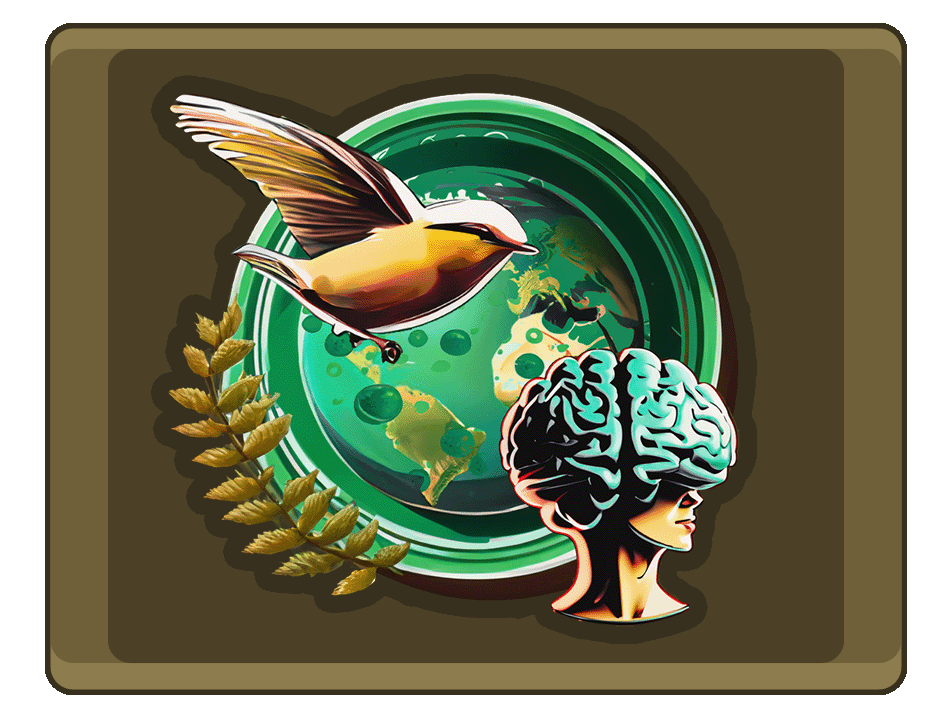

The importance of biocultural diversity
Biocultural diversity encompasses the diverse interactions between biological and cultural aspects within an ecosystem or society. This interconnectedness extends across different areas of human life and has far-reaching effects on our environment, our culture and our society. In the following I will take a closer look at the biocultural significance of various subject areas and show their connections.
Cultural follower:
Cultural followers are species that adapt to and benefit from the habitats created by humans. This adaptability affects not only biological diversity, but also human culture, forcing us to rethink our relationship with the environment and our use of natural resources.
learn moreNeozoa:
Neozoa are animal species that move into new areas through human activities and establish themselves there. Their invasion of ecosystems can have far-reaching ecological and cultural consequences, affecting existing species and habitats and changing our perception of nature and wildlife.
learn moreExotic animal keeping:
Keeping exotic animals as pets or in zoos is an example of the connection between biological diversity and human culture. Not only can this practice have a negative impact on the health and welfare of animals, but it can also contribute to the spread of disease and the illegal wildlife trade.
learn moreAgriculture:
Agriculture is closely linked to biocultural diversity because it not only influences biodiversity but is also shaped by cultural practices and beliefs. Traditional agricultural methods and local varieties contribute to the preservation of biocultural diversity and enable the sustainable use of natural resources.
learn moreHeathland economy:
The management of heathlands is an example of the biocultural importance of traditional practices and local knowledge. Grazing, mowing and other traditional methods not only promote certain species, but also create cultural landscapes that are an important part of cultural heritage.
learn moreNeurodiversity:
The diversity of human brains and nervous systems influences not only individual perception and interaction with the world, but also culture as a whole. By recognizing and valuing neurodiversity, societies can promote a more inclusive and diverse culture that takes into account the different needs and abilities of all people.
learn moreClimate change:
Climate change has far-reaching impacts on biological diversity and human culture. Changes in temperature, precipitation and other environmental factors affect not only ecosystems and species, but also human communities and their cultural practices, whether through migration, adaptation or loss of traditional knowledge.
learn moreEnvironmental pollution:
Pollution of air, water and soil from human activities threatens not only biodiversity but also human health and well-being. Dealing with environmental pollution therefore requires not only technological solutions, but also a cultural change that leads to a sustainable use of natural resources and a healthy environment.
learn moreSpecies extinction:
Species extinction, also known as mass extinction, threatens the stability of ecosystems and the diversity of life on our planet. Caused by natural or human factors, species extinctions lead to a loss of genetic diversity and can trigger ecological chain reactions that destabilize entire ecosystems. Furthermore, species extinction is often accompanied by the loss of cultural heritage and traditional knowledge that is closely linked to specific species and habitats.
learn moreTechnology:
Technology influences both biological diversity and human culture. By developing new technologies, we can find ways to better protect and preserve biocultural diversity. At the same time, however, technological developments can also have negative effects on the environment, for example through the destruction of habitats or the pollution of water and soil. Responsible use and design of technology is therefore crucial to preserving biocultural diversity and enabling a sustainable future.
learn moreMysticism and religion:
The influence of mysticism and religion on biocultural diversity is complex. These spiritual traditions connect people with nature and shape their perception and interaction with the environment. By recognizing the spiritual dimension of nature, we can develop a deeper understanding of its importance and work together to protect and preserve it.
learn moreContemporary artists:
The artists Maya Lin, Olafur Eliasson, Patricia Johanson, Agnes Denes, Richard Long, and Koen van Mechelen explore and reflect on biocultural diversity in their works. Through their unique approaches in art, architecture, and landscape design, they contribute to raising awareness of environmental issues and examining the relationship between humans and nature. Their works reflect the complexity and beauty of the natural world, emphasizing the importance of sustainable interaction between humans and the environment.
learn morePrehistoric era:
The prehistoric era was characterized by a deep connection between humans and their natural environment, evidenced by the close interaction with imposing animals such as mammoths and giant sloths. A prominent artifact of this time is the Lion Man of the Hohlenstein-Stadel, symbolizing the spiritual bond between humans and animals. This early epoch laid the foundation for biocultural diversity, which continues to shape our relationship with nature today.
learn moreCultural diversity among animals:
The cultural diversity among animals is a fascinating phenomenon, manifested in various behaviors and traditions. Dolphins, primates, and birds are examples of animal species that develop local cultural traditions passed down from generation to generation. This cultural diversity has significant impacts on behavior, adaptability, and the survival of animal populations. Research methods such as behavioral observation, genetic analysis, and ecological modeling help to study and understand these phenomena. Exploring cultural diversity among animals expands our understanding of the animal kingdom and contributes to biodiversity conservation.
learn moreOverall, these topics highlight the close interconnection of biological diversity and human culture as well as the need for an integrative and holistic approach to environmental and cultural protection. By valuing and preserving biocultural diversity, we can not only promote the health and well-being of people and nature, but also preserve a diverse and vibrant world for future generations.









